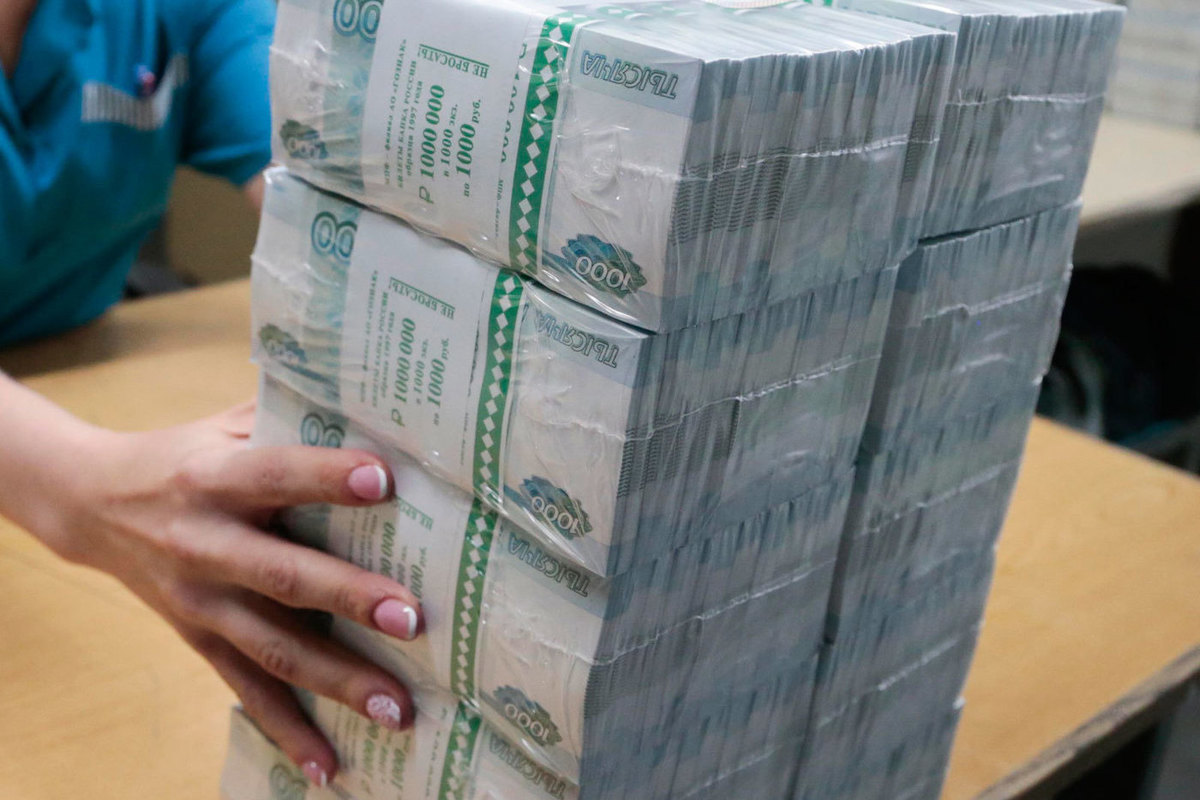A trillion was collected from the Russian rich
[ad_1]

Experts called the weak points of the tax on wealthy Russians
Tax collections from wealthy Russians to the consolidated budget exceeded a trillion rubles last year, the Finance Ministry said. This is one and a half times more than what was collected a year earlier – then it was 636 billion. The increase is impressive, especially against the background of the difficult realities of sanctions, the collapse of the stock market and the general recession that befell our economy in 2022. What is the matter here, it would seem that there should be fewer legal rich people in the country, but everything turned out exactly the opposite? If you look at it, the achievement recorded in the draft law on the execution of the budget for 2022 has its own risks. Unfortunately veiled.
The increased (15% instead of the standard 13%) personal income tax (PIT) rate applies to citizens with an annual income of more than 5 million rubles, or from 417 thousand per month. According to the scheme in force since 2021 (when the transition to a progressive income tax scale was implemented), 2% of the tax goes to the federal treasury (last year – 132 billion rubles), the remaining 13% (882 billion) is distributed by regions. After funds are credited to the federal budget, they are sent to a special fund that provides assistance to children with rare (orphan) diseases.
But here is the fundamental question: what is the number of payers of the increased personal income tax rate in Russia today? There is no answer, since since 2020 the Federal Tax Service has not disclosed this information nationwide. An approximate figure can only be determined by indirect evidence. According to the latest data from the tax authorities for 2019, in the Russian Federation there were 1.3 million individuals with an annual income of 1 million to 10 million rubles and 54 thousand with an income of over 10 million rubles. But both in the covid 2020 and in the even more problematic 2022, a lot of things happened that make one doubt the relevance and representativeness of any statistics. To put it bluntly, the number of taxpayers with an income of 5 million rubles a year can range from 300,000 (closer to the truth) to 1 million people. Let us recall that the total number of able-bodied citizens in the Russian Federation is about 70 million.
It is also known that in 2021, the largest number of people with a monthly income of 417 thousand worked in the financial and insurance sector – 18.8 thousand people, followed by trade – 16.8 thousand, in third place – manufacturing, 15.4 thousand. But last year to a large extent changed, reshaped the sphere of employment. Together with salary priorities.
“The increase in tax revenues to the consolidated budget by almost 370 billion rubles clearly reflects the tectonic shifts that occurred in the labor market in 2022,” says Nikita Maslennikov, a leading expert at the Center for Political Technologies. “His second half was marked by a labor shortage and a record low unemployment of 3.7%. In addition, the process of structural adjustment that has begun in the economy has dramatically changed the dynamics of wages in a number of industries. For example, in the IT sector they increased by 20-30%, as well as in defense enterprises, in engineering in general. The labor market has become, in fact, a job seeker’s market. And if your salaries are growing in certain sectors, then they are growing linearly for management personnel, for people who used to receive several million a year.”
However, it would be wrong to paint the situation exclusively in light colors. At a minimum, it indicates that the dynamics of wages prevails over the productivity and quality of labor. A person with insufficient qualifications can be attracted to an enterprise, provided with a huge salary by previous standards, but he will work poorly. Today, the number of such “specialists” can be measured in tens of thousands. As for the topic of a progressive scale of taxation, Maslennikov sees in it a delicate nuance associated with the targeted nature of spending. According to the interlocutor of MK, he is not sure that all the hundreds of billions of rubles in taxes collected at a personal income tax rate of 15% go for their intended purpose – children with orphan diseases, and not to the side. Maybe we should think about expanding the target program and spend part of the funds, say, on health care (say, on free medical examination), on the vocational education system? Otherwise, it will not be possible to narrow the gap between the dynamics of wages and labor productivity.
“To a large extent, the increase in income from the increased personal income tax rate is associated with dividends against the backdrop of high payments,” says Artem Deev, head of the analytical department at AMarkets. – Another technical reason is the additional accruals of the Federal Tax Service on income received in 2021. Here the point is as follows: now the employer applies the 15% rate, and only when he pays the employee more than 5 million rubles a year. And if an individual receives income from several sources, then at the end of the year, the tax authorities have to independently calculate and collect additional surcharges. In 2022, the FTS added this tax for the first time, since the progression element is only valid from 2021.”
[ad_2]
Source link






